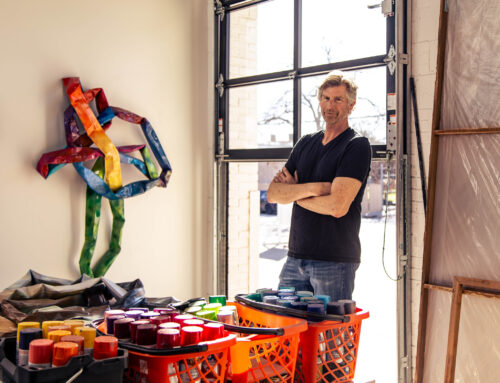Preston Hollow Country Club was the first to lay claim to the rolling hills, flowing creek and tall trees growing in this northeastern quadrant of Preston Hollow.
But in the 1970s, a fellow by the name of Ross Perot made the Club an offer its members couldn’t refuse. He planned to put Electronic Data Systems (EDS) on the map, and the Club’s piece of prime real estate (176 acres) was going to be the perfect showcase for his new corporate headquarters.
Although Perot ran a tight ship, EDS employees worked at one of the most beautiful corporate campuses in North Texas. And overall, a symbiotic relationship developed between the surrounding residential community and the corporate giant in its midst.
By the 1980s, however, corporate prosperity and the information age propelled the Dallas-based corporation to search for a larger facility.
While residents waited for news that would affect their community, issues such as property value, zoning, traffic, safety and private enterprise were being discussed and debated. In 1984, when negotiations between EDS, city representatives and private developers began in earnest, a coalition of concerned residents came together to form the Hillcrest/Forest Neighborhood Association to provide a representative voice in the mix of discussions taking place.
Hot seat / “Grassroots organizations come into being when a burning issue gets people fired up. It gets their attention,” says Jane Pak, a founding member of HFNA.
She recalls the group’s early days, “when people were willing to work very hard in bringing their skills and awareness to the area’s concerns. We were fortunate to have had a willingness on the part of EDS to utilize communication techniques, but we also knew that we had to have someone who was capable in communicating our concerns,” Pak says.
The HFNA found that someone in Nadine Bell.
“She was much more than a facilitator,” Pak says. “With her help, we were able to agree upon a process of communcation, and we were able to get in touch with people in an efficient manner.”
Meetings about the property droned on until Feb. 24, 1993, when an agreed-upon planned development finally was approved by the planning commission and the Dallas City Council.
“It’s hard to believe,” Pak says, “that we were involved with these (rezoning) issues for so long.”
Pak, who served as president between ’93 and ’96, is less active these days.
“You have to pull back and allow others to move into your role. It’s necessary for yourself and the organization.”
Work continues / “Maintaining and enhancing the neighborhood is what we’re about,” says Ron Hull, the group’s current membership chairman.
“We’ve seen membership double from 250 to more than 500 members, and we’re setting a goal of no less than 600 members by next spring.”
The group’s active membership pays dividends when controversial issues impact the neighborhood: Hull says more than 300 people crowded into Churchill Recreation Center recently to discuss whether or not a church should establish a youth home in a nearby residential area. Although established the youth home would have been legal, the large community turnout dissuaded the plan’s proponents.
Current president Leslie Beatty sees the group as the major link between the concerns of residents and real estate developers, as well as educational, civic and political organizations, and businesses. The challenge, she says, is to “create a visible and proactive grassroots organization that protects and is an advocate for the area’s economic potential. We help create consensus for growth and direction.”
Neighborhood resident Francis Lena agrees: “The organization gives us an economic and political voice. What happens here affects other communities.”
The group distributes information through its monthly newsletter, which goes to all homes (about 1,200) within the organization’s boundaries, roughly a one-half mile radius surrounding the old EDS campus.
Newsletter editor Patti Wilke says the steering committee’s monthly meetings are open to anyone.
Beyond the walls / Pak describes the social benefit of a neighborhood association as “a way for a community to know one another – a way of communicating with each other. Crime watch groups are an excellent example of this. I just hope that the people living in these new gated committees here (of which there are now eight) realize that they have neighbors on both sides of them.”
The HFNA finds a unifying symbol in ice cream, and group members invite neighborhood residents to come out for the group’s annual ice cream social, held each spring at Kramer Elementary School.
Among the issues being addressed these days are the tearing down of older homes to replace them with much larger homes not necessarily in aesthetic harmony with the neighborhood; the noise from Medical City’s heliport; possible changes on LBJ that may affect the Hillcrest exit; and the landscaping and beautification project along the median strip on Hillcrest Boulevard.






